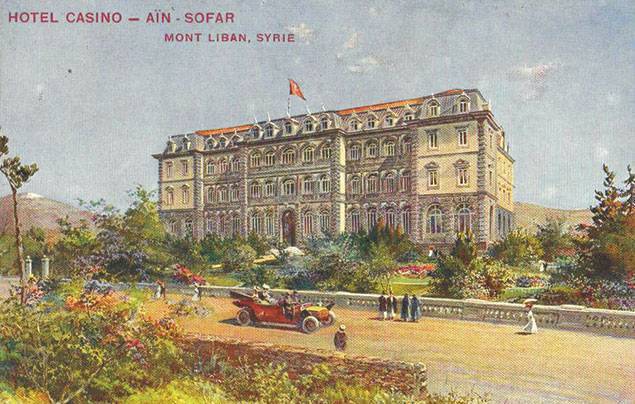
A postcard of the Grand Hotel in Sofar from the early 1900s
By Zina Hemady
Art and photo exhibits are taking Beirut and, more recently, other areas of Lebanon by storm. As the country regains its pre-war status as a cultural hub, much attention has been focused on preserving Lebanese heritage with the term spanning over several fields including architecture, art, photography, music, oral history, theater, literature and food.
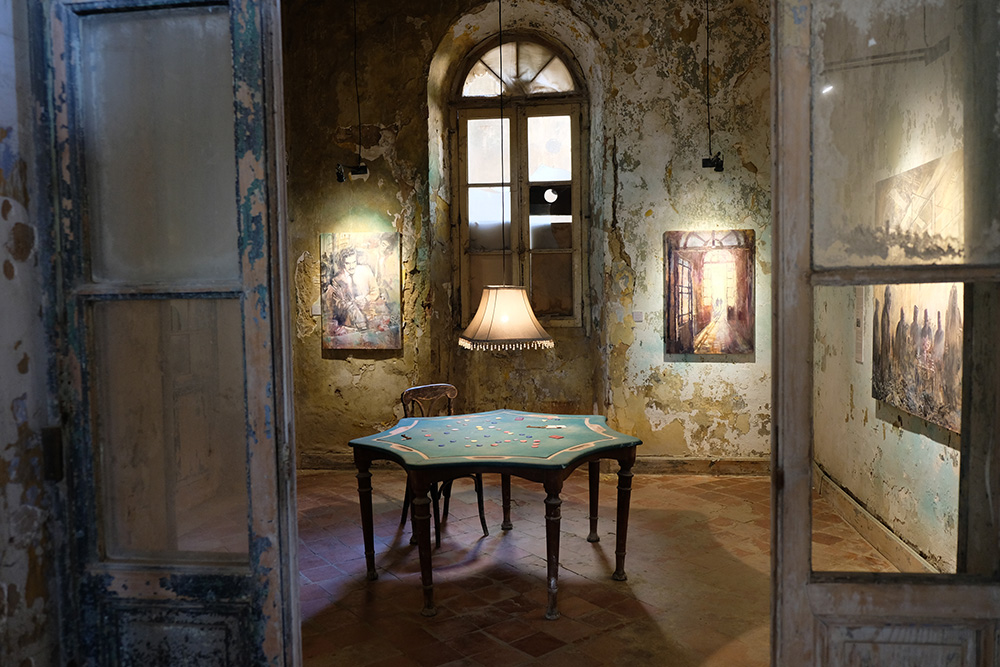
Tom Young’s paintings on the walls surround a card table at the center of a room at Grand Hotel Casino Sofar
The latest such initiative is an exhibit by British artist and conservationist Tom Young featuring the Grand Hotel Casino Sofar, once considered an architectural wonder before it was ravaged by the country’s 1975-1990 civil war. Built in 1892 in the mountain resort of Sofar located on the Beirut-Damascus road, the hotel acquired a reputation as a summer escape for the social elite but also as a playground where the who’s who of Lebanese society rubbed shoulders with royalty, diplomats, and entertainers with whom they spend the evenings playing poker, singing, and dancing. It was occupied by Syrian troops when they entered the country in 1976 and has remained vacant and in ruins since they left in 2005.
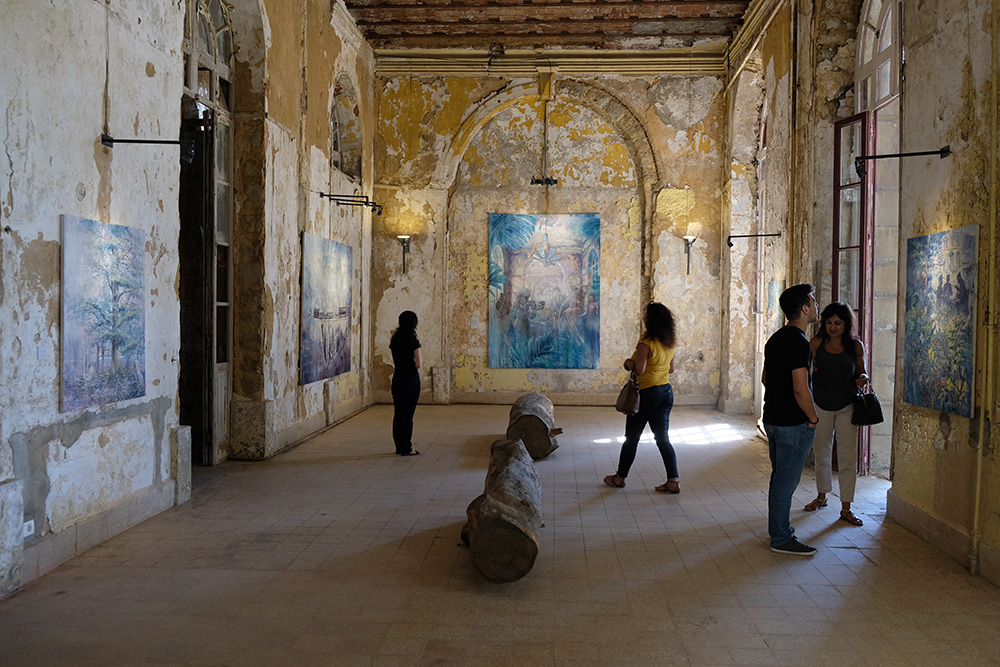
Visitors admire Tom Young’s paintings in what was once the main dining area.
Young, who moved to Lebanon in 2008, has focused his work on drawing attention to Lebanon’s architectural heritage by finding, painting, and resuscitating abandoned spaces that are integral to the country’s at-risk heritage. His former projects include the Rose House, an Ottoman mansion distinguished by its color and row of arches overlooking the Mediterranean; Villa Paradiso, the former home of an Armenian family which had survived the 1915 genocide by fleeing to Lebanon only to escape again at the outbreak of the civil war leaving behind many of their belongings, and Beit Bustani, a dilapidated 19th century house now converted into a space for art and culture. Young has produced most of his work by establishing residency in the spaces that he wants to capture and revive in his art.
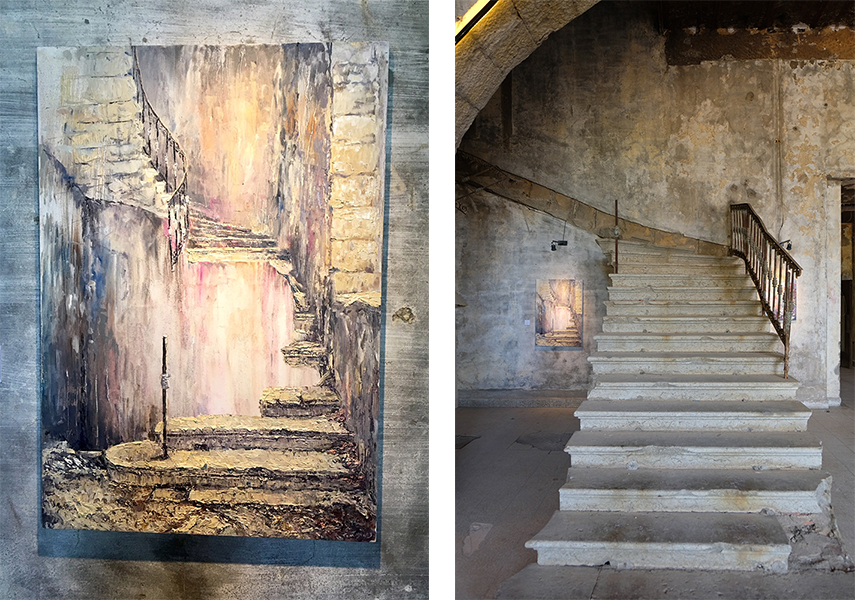
A painting of the hotel’s main staircase beside a photograph of the stairs from a different angle
While many of his previous projects were challenging due to difficulty locating the estates’ owners or the conflict between land value and preservation, the project at the Grand Hotel unfolded somewhat smoothly as it was the owner, Rodrick Sursok Cochrane, who invited the artist to spend time among the ruins of the hotel to create his work. Cochrane, who comes from one of Beirut’s most prominent and affluent families who own several architectural gems in the city and beyond, is hoping to restore the building while preserving its historical heritage.
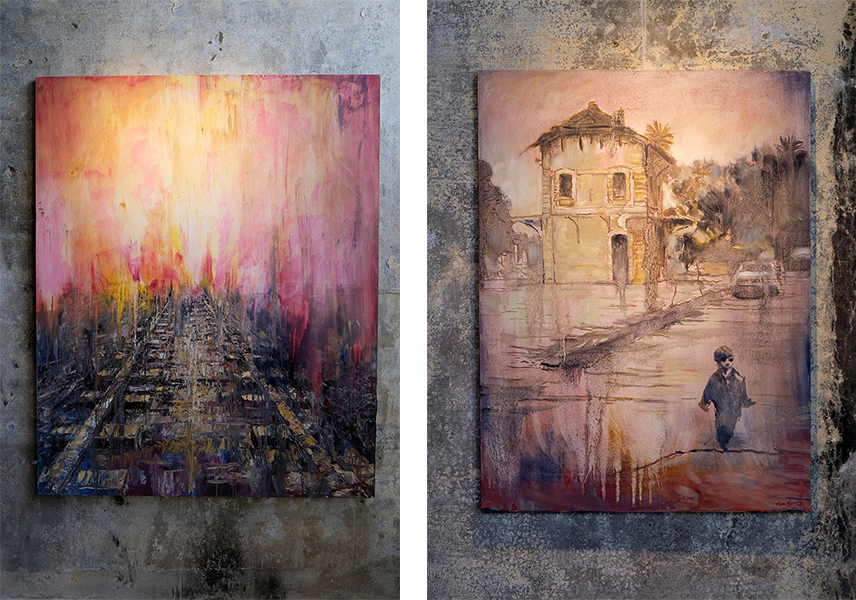
Paintings of an empty train track and a boy walking away from the station in Sofar
The forty artworks, which took eight months to produce, hang on the hotel’s minimally restored walls which still bare evidence to its turbulent past. The paintings feature the dining room, the dance hall, the kitchen, guest rooms, corridors, winding staircases, and other nooks and crannies all brought to life with the portraits, voices, or specters of the hotel’s prominent clientele including iconic Arab entertainers such as Omar Sharif, Um Kulthoum, Abel Wahab, Asmahan, Abel Halim Hafez, Samia Gamal, Sabah, etc. Also visible is the staff including the cooks and receptionists who were integral to the hotel’s operation and who are also part of its heritage. Moreover, the train station located across the street from the hotel, which once linked Sofar to Beirut and Damascus, features prominently in the exhibit.
The setting and Young’s paintings sweep visitors to another era which had fallen into oblivion and has now resurfaced to be encrusted in Lebanon’s history.

Omar Sherif at the card table beside a painting showing the Lebanese singer Sabah leading her current and future husbands to her room
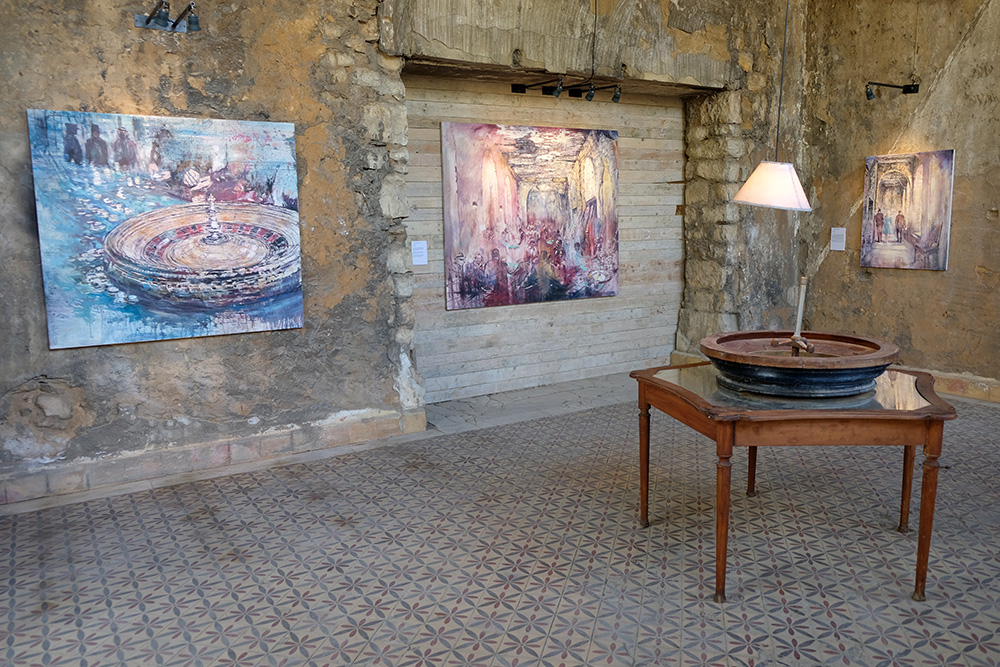
Paintings of the casino that once attracted visitors from across the region
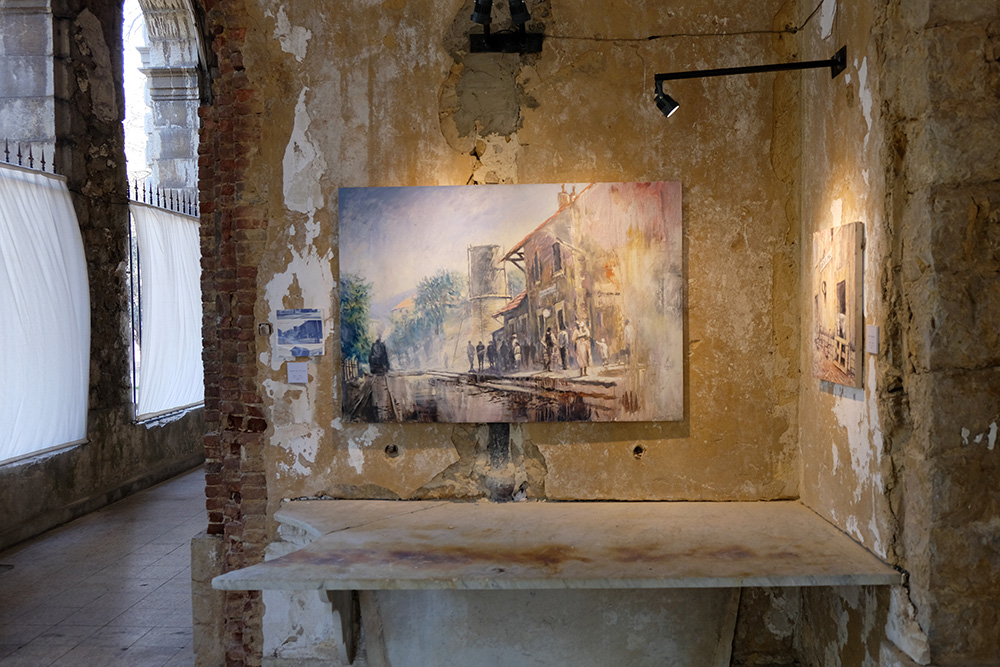
A painting of Ein Sofar train station on the hotel’s still dilapidated walls
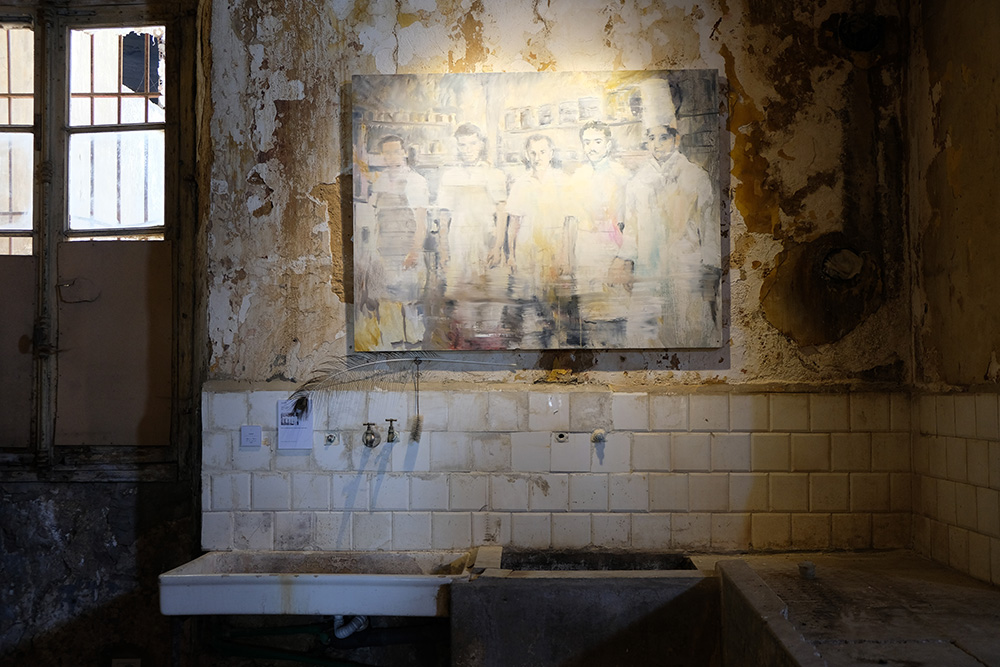
A painting showing kitchen staff displayed on the hotel’s kitchen walls

thanks for the information
http://www.ju.edu.jo/Pages/Why-UJ.aspx